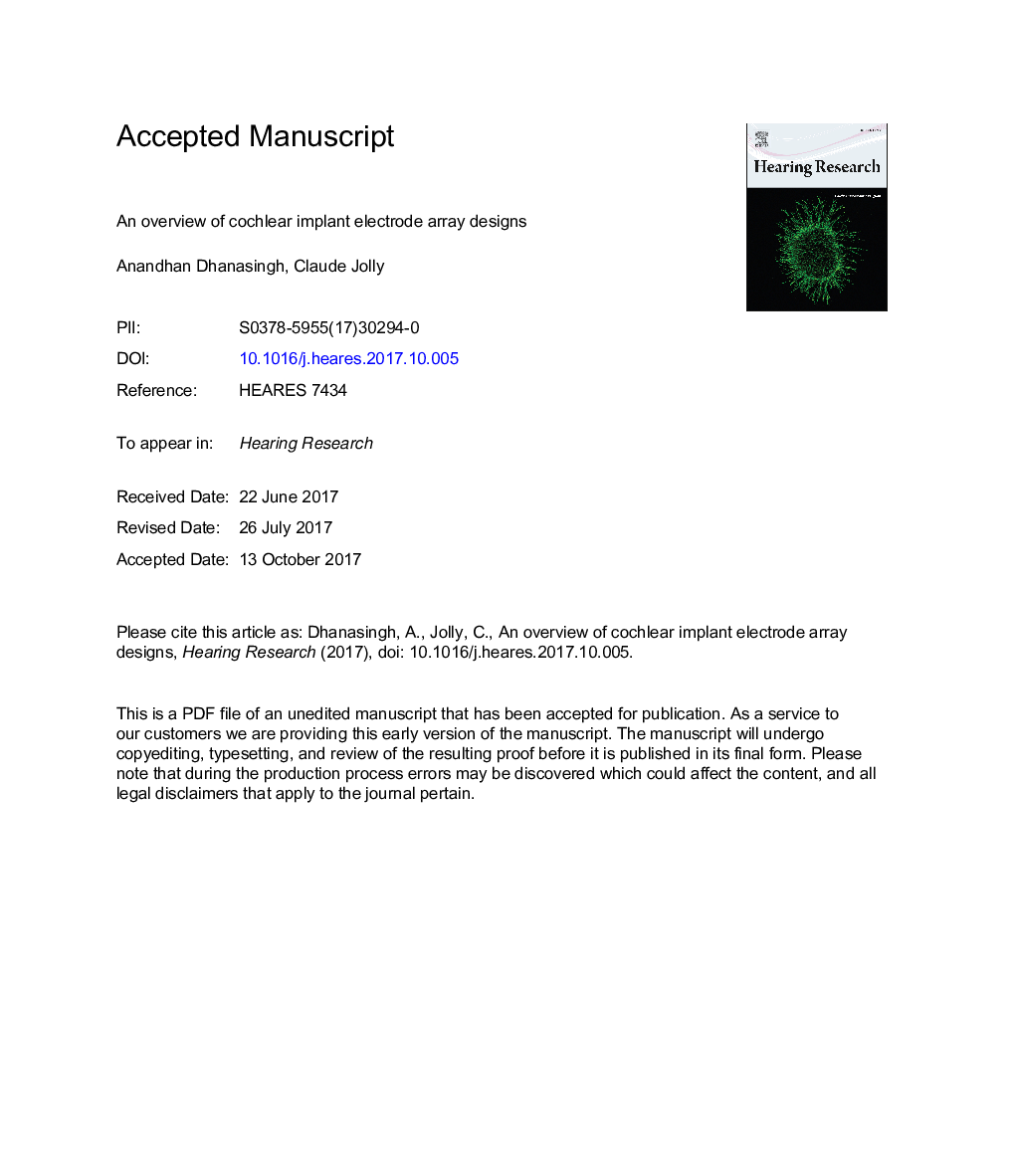| کد مقاله | کد نشریه | سال انتشار | مقاله انگلیسی | نسخه تمام متن |
|---|---|---|---|---|
| 8842443 | 1615544 | 2017 | 35 صفحه PDF | دانلود رایگان |
عنوان انگلیسی مقاله ISI
An overview of cochlear implant electrode array designs
ترجمه فارسی عنوان
خلاصه ای از طرح های الکترودهای کاشت حلزونی
دانلود مقاله + سفارش ترجمه
دانلود مقاله ISI انگلیسی
رایگان برای ایرانیان
کلمات کلیدی
الکترود کچلر، دیوار جانبی راست آغوش مدیال قبل از منحنی، انتقال الکترود، حفظ ساختار، ناهنجاری کچلر،
موضوعات مرتبط
علوم زیستی و بیوفناوری
علم عصب شناسی
سیستم های حسی
چکیده انگلیسی
Cochlear implant electrode arrays are designed with specific characteristics that allow for the preservation of intra-cochlear structures during the insertion process, as well as during explantation. Straight lateral wall (LW) electrode arrays and pre-curved modiolar hugging (MH) electrode arrays are the two types that are commercially available. Although there is a third type of electrode array called the mid-scala (MS), which is positioned in the middle of the scala tympani (ST), and is usually considered as an MH type of electrode. Different lengths of straight LW electrode arrays are currently available which allow for insertion across a range of different sized cochleae; however, due to manufacturing limitations, pre-curved MH electrodes are generally only available to cover the basal turn of the cochlea, while the spiral ganglion cells are distributed in the Rosenthal's canal that extends into 1.75 turns of the cochlea. Both straight LW and pre-curved MH electrodes can cause a certain degree of intra-cochlear trauma, but pre-curved MH electrodes tend to deviate into the scala vestibuli from the scala tympani more often than the straight LW electrodes, resulting in damage to the osseous spiral lamina/spiral ligament which could initiate new bone formation and eventually affect the cochlear implant users' hearing performance. Structural damage to the cochlea could also affect the vestibular function. With pre-curved MH electrodes, higher degrees of trauma are related to the fixed curling geometry of the electrode in relation to the variable coiling pattern of individual cochleae, the orientation of the electrode contacts in relation to the modiolus wall, and how effectively the stylet was handled by the surgeon during the procedure. Wire management, metal density, and the shore hardness of the silicone elastomer all contribute to the stiffness/flexibility of the electrode. It is important to acknowledge the impact of bringing the stimulating contacts closer to the modiolus wall with an MH electrode type in terms of the resultant damage to intra-cochlear structures. The presence of malformed cochleae should be identified and appropriate electrodes should be chosen for each specific cochlea, irrespective of the cochlear implant brand. In order to utilize drug therapy, the cochlea should be free from any trauma.
ناشر
Database: Elsevier - ScienceDirect (ساینس دایرکت)
Journal: Hearing Research - Volume 356, December 2017, Pages 93-103
Journal: Hearing Research - Volume 356, December 2017, Pages 93-103
نویسندگان
Anandhan Dhanasingh, Claude Jolly,
